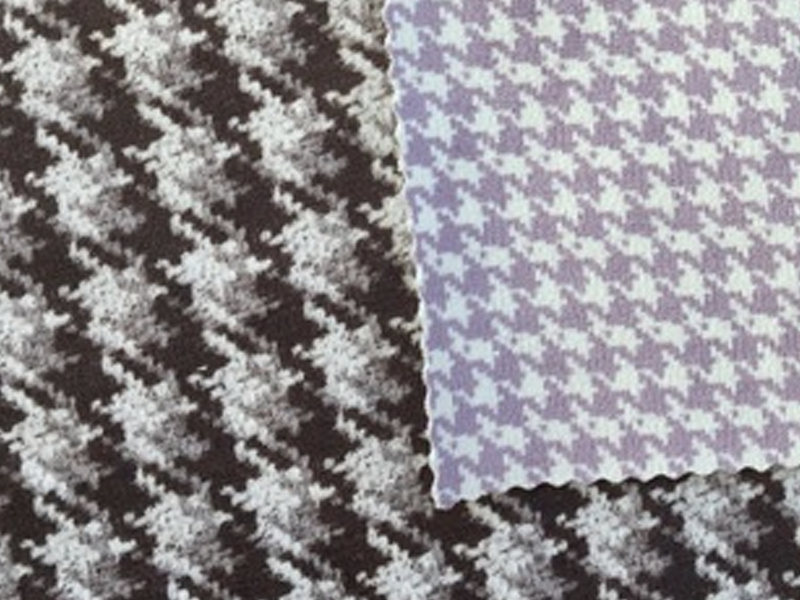We’re continuing our exploration of plaid this week! We’ll cover two atypical styles: houndstooth and argyle. While visually quite different, we consider both of these Scottish patterns part of the larger plaid category. Learn more after the jump!
Houndstooth
At first glance, the houndstooth pattern may seem an odd addition to the plaid family. However, while houndstooth doesn’t feature the classic plaid banding, this pattern is essentially a series of “broken” square checks. The resulting design is made up of alternating pointed shapes, classically in black and white.
The history of houndstooth contrasts with that of the Highland tartan that we discussed last week. The traditional twill structure, first worn by shepherds as a means of camouflaging dirt, was eventually adopted in the Lowlands of Scotland as a signal of clan neutrality. In the 1930s, houndstooth was popularized by the daily patronage of Edward VII, the Duke of Windsor and later in the 1960s by fashion house, Christian Dior. Ever since, it has been associated with an air of aristocratic sophistication and elegance.
Houndstooth is a great example of a type of pattern that produces exciting effects at different scales. A small-scale houndstooth (commonly known as a “puppytooth”) is a perfect way to introduce a textural element to a more traditional room. Meanwhile, a graphic, large-scale houndstooth showcases the abstract shapes in a very contemporary way.
Explore our variety of houndstooth designs here.
Argyle
While you might not be familiar with the term “argyle,” chances are you have witnessed this classic pattern in the hosiery department or on the golf course. The argyle design features a checkerboard arrangement of alternating colored diamonds (sometimes called “lozenges”) upon a solid background. Layered over the top of this pattern are a series of diagonal, crisscrossing, dashed lines, termed “rakers”.
Argyle originated in the 17th century in the Scottish county of Argyll, home of Clan Campbell. Drawing inspiration from the colors and woven lines of the green and white Campbell tartan, the local seamstresses developed a complicated intarsia knitting technique for the clansmen’s matching long socks. In this manner, while the argyle pattern does not include bands of color strictly intersecting at right angles, we can see that argyle is derived directly from the original tartan pattern.
The diamond design first rose to commercial popularity following the First World War. This feat is attributed to the knitwear company Pringle of Scotland and their decision to experiment with the pattern on clothing. Thus was born a classic fashion staple, the argyle sweater. Today, this pattern is largely associated with golfing sweater vests and preppy collegiate attire. However, here at WeaveUp, we look forward to the further evolution of argyle as it is taken in new and provocative directions!
Below are some contemporary interpretations of argyle found in our library.
Check back next week for the final installment of our plaid series!









Leave A Comment